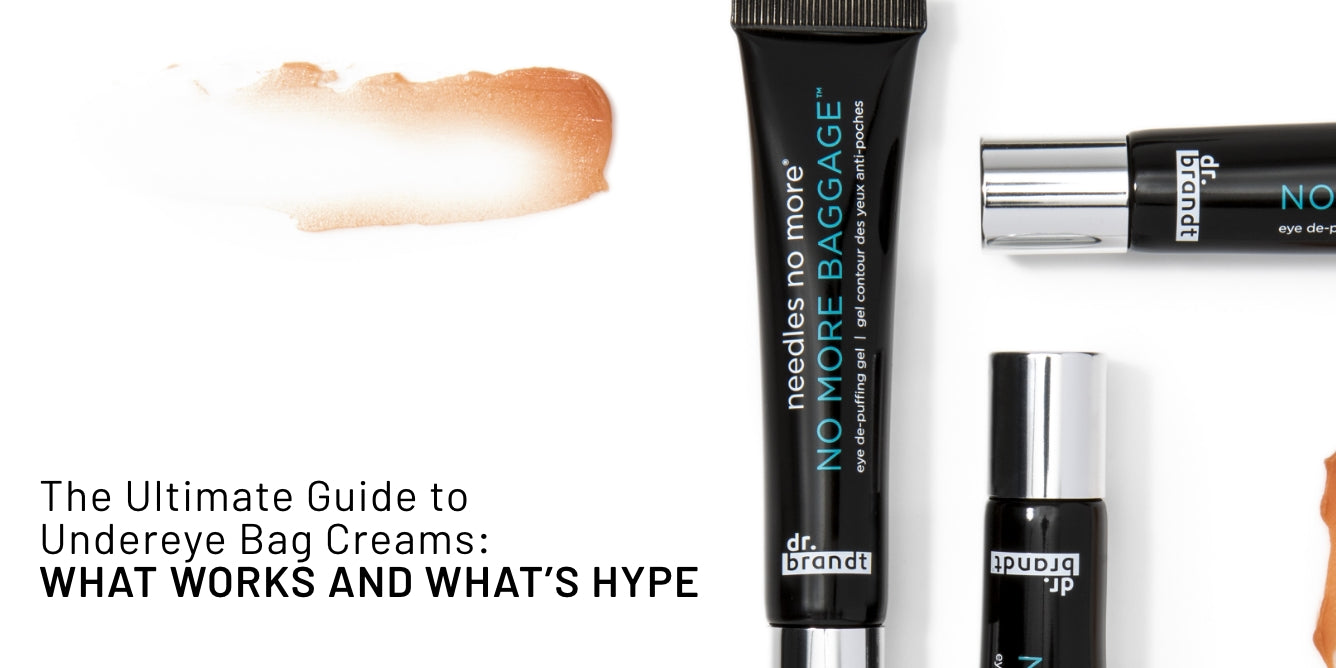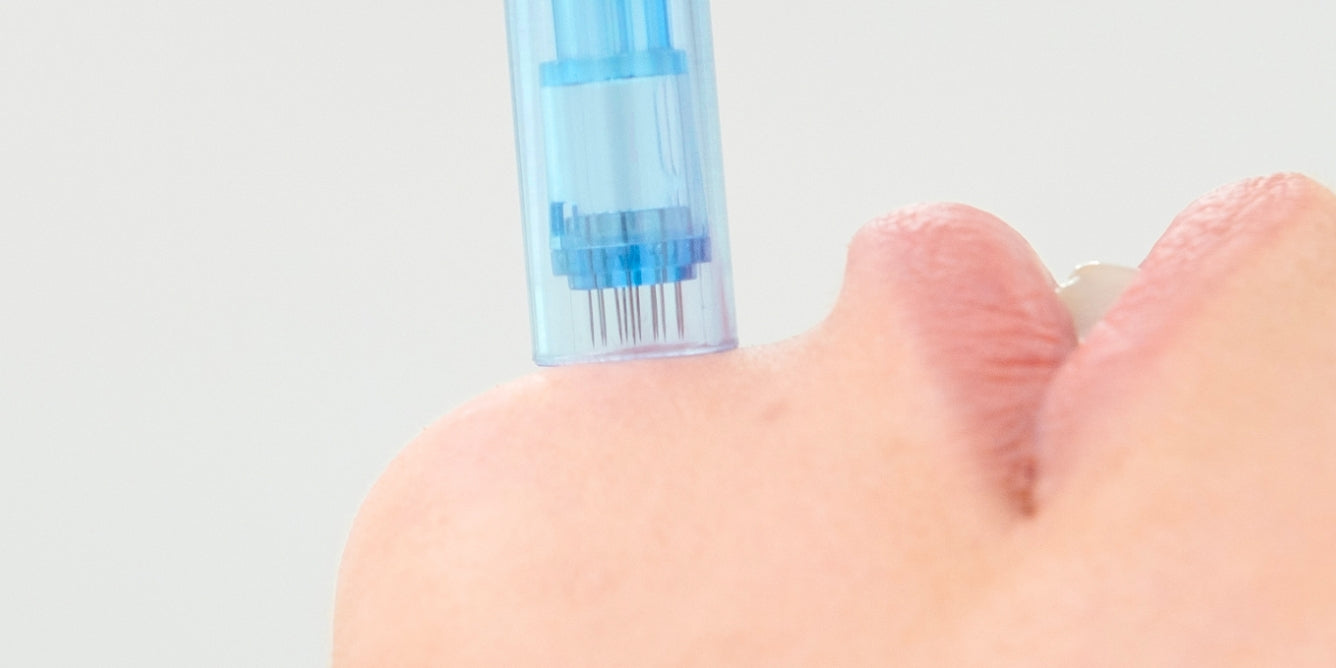
By Dr. Shasa Hu, MD, FAAD
Exfoliation is one of the key steps in skincare. Our skin is made of two main layers: epidermis and dermis. With the top layer, the epidermis, the skin cells move up from stratum basalis to stratum corneum, as the cells mature and shed off. By the time the cells, or keratinocytes, reach stratum corneum, they are no longer living. This whole cycle averages 4-6 weeks depending on a person’s age and other factors such as topical skincare products.

When the dead skin cells at the stratum corneum layer don’t shed timely, we can experience pore-clogging, dull complexion, and dry, scaly patches. With either chemical or physical exfoliation, we can facilitate healthier skin cell turn over by removing the build-up of dead skin cells on stratum corneum. An exfoliant also helps with skin texture and tone by evening out areas with an excess build-up and revealing the younger layer with a more even skin tone.
What does exfoliate mean?
Exfoliation is all about removing the build-up of excess dead skin cells on the very top layer of skin, the stratum corneum. By exfoliating our skin, we are preventing clogging of pores by clearing away the dead cells. We are also promoting healthier cell turn over as the skin cells can move through the layers of the skin faster after exfoliation.
Why should you exfoliate your skin?
The reason why it is important to exfoliate so that we can unclog our pores, and smooth out the top layer of skin so that topical skincare ingredients can penetrate better. Exfoliation can be particularly helpful for people with acne-prone skin, to unclog and clean out pores. Chemical exfoliants with Alpha Hydroxy Acid/Beta Hydroxy Acid such as salicylic acid, glycolic acid, and malic acid can work synergistically with other comedolytic topical skincare products such as benzoyl peroxide, sulfur and retinol/ retinoids. Regular exfoliation can also be beneficial in people getting treatment for skin lightening to help reveal brighter and more even skin tone.
Why and how to properly exfoliate your skin?
A proper face scrub usually is about balancing the degree of exfoliation, the frequency of exfoliation, and your skin type. There are two main types of exfoliation: physical and chemical. Physical exfoliation can be achieved by using a muslin washcloth while washing, or using soft brushes with rotating heads, or using cleansers containing beads. Chemical exfoliation is usually cleansers with alpha-hydroxy acids or beta hydroxy acids such as salicylic, glycolic, mandelic, lactic, malic, and citric acids. Chemical exfoliation sometimes can be achieved by using at-home peel pads as well.

The best time to exfoliate is in the evening after you wash your face with a gentle cleanser. Whether you choose to use chemical or physical exfoliation, it is essential to follow up immediately with your topical skincare serums and moisturizer, to allow skin cells to be protected and hydrated. Topical skincare products also are more effective when they can penetrate deeper after exfoliation.
How often should you exfoliate?
For most skin types, exfoliate 2 times per week is adequate. Too frequent or too aggressive exfoliation can lead to microscopic tears or cracks on the stratum corneum, which will make the skin feel tight, or even painful. Over exfoliation can also lead to paradoxical excessive sebum production as our skin tries to balance out effects of over stripping of the top layer. Additionally, people with sensitive skin may need to reduce exfoliation to once or twice a week, to avoid irritant or contact dermatitis. Those on topical retinol or AHA/BHA may also need to reduce the frequency of exfoliation because of their synergic action of cell renewal/ exfoliation. The rule of the thumb is that if your skin feels very tight, or even tingles after exfoliation, then you need to reduce the frequency or be gentler.
How to exfoliate your face?
You can exfoliate your face with either a face brush or cleansers with beads or AHA/BHA. Those with sensitive skin may benefit more with a gentle cleanser with AHA/BHA to avoid potential tears to the skin layer. The best time to exfoliate your face is in the evening after you have removed your makeup and washed your face with a gentle cleanser. It is best to exfoliate only 2 times per week, for a few minutes at a time.
Immediately after you exfoliate your face, resume the rest of your skincare routine. If you use a brush head exfoliate, it is important to keep it clean and wash it regularly. If you choose chemical exfoliation and you have sensitive skin, you may need to test the cleanser out on a small area of your face for a few times before using it on your entire face. It is also important to avoid delicate areas such as around your eyes, nose, and lips when you exfoliate. Lastly, if your face feels tight or looks red, then you may need to change to gentler exfoliating cleanser or reduce the frequency.
How to exfoliate your body?
For people suffering from dry skin, or bumpy skin (known as keratosis pilaris), exfoliation is very beneficial to reveal healthier skin texture and facilitate more effective moisturization with topical emollients. Many topical hydrating ingredients such as ceramides and hyaluronic acid penetrate more in-depth and provide better hydration when the dry patches have been exfoliated. A loofah is a very effective yet gentle way to exfoliate. It is important to limit exfoliation to 2-3 times a week because dry skin and keratosis pilaris can get irritated easily with over-exfoliation. Chemical exfoliation with a cleanser containing glycolic acid and fruit-derived AHA 2-3X/ week is equally effective. It is important, however, to follow up the exfoliation with a fragrance-free moisturizer for your body as soon as you dry off, so that your skin doesn’t get irritated or feel tight.

How to exfoliate your legs?
You can use simple sea salt or sugar scrub to exfoliate your legs. It is important to exfoliate 2 - 3 times per week, particularly after shaving to prevent ingrown hair. Additionally, when you shave your legs, you are also getting exfoliative benefits with the razor. This is another reason why it is important to use shaving cream to minimize razor cuts when you shave, as the shaving cream acts as a skin lubricant.






Leave a comment (all fields required)